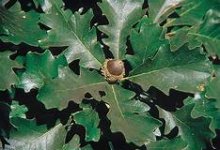To greatly simplify it...
Foraging is for vitamins and minerals.
Hunting, fishing (trapping) and gardening is for calories.
Our long term storage is probably 95% condensed calories. I also keep multivitamins on hand. "Weeds" like nettles, chickweed, lambsquarters, dandelion are valuable sources of vitamins, minerals and micronutrients.
By Spring, most self sufficient people, especially before canning and freezers, were starving, even if they still had plenty of grain, potatoes and other staples... because they were short on vitamins and micronutrients. That's why "spring tonics" were so popular, and why people were out as soon as the snow melted looking for the first bits of greens.
We have the ability to grow all our staples... even sugar, from sugar maples or sugar beets. However, experience taught us early on that stocking up and properly storing grains, pasta, sugar and salt was a far better use of our time and funds.
I've always tried to keep two years of sufficient calories and vitamins on hand, in the form of staples, and dried fruits and vegetables. We figure it will give us the cushion necessary if TSHTF, so we don't have to rely on producing everything necessary within the first year (something which would really be vital if TSHTF involved radiation)
Our experience as farmers taught us that there are never any guarantees. So having at least one extra years worth on hand is a good thing. We also can or freeze extra, over and above our normal expected needs for a year, any time we have a good crop. Most fruits and vegetables will keep their quality for 2-3 years, stored cool and in the dark. After that, pickier eaters will notice changes in flavor and texture, but it will still be edible and nutritious, although vitamin content will degrade over time.
This is the time of year we start looking at our inventory and planning the Spring planting. We definitely don't need to plant as many onions, and I can see I need to order more seed potatoes... we just don't get the yields here we are accustomed to. We're using up our older canned beans, and will be growing several bushels for canning this year.
Pigs will also be grown this year, after a year off, but we need to figure out grain prices... we may just grow 2-3 for our own use, due to cost. People just won't pay $6 a pound for pasture raised pork ( or they want to only buy bacon!) but our costs have been around $4 a pound, just for feed and the original cost of the piglets... before the grain price went up. I'm insisting on milking the cow this year... with the price of dairy in the store, even the men folk are on board with helping me get set up... I'm going to have to keep her with my horses, rather than pasturing her with the cattle, although DS was talking about setting up a mobile milking station that i could drive out to the pasture!
We'll use all the butterfat ourselves, and enough whole milk for fresh drinking (probably 1/2 gallon a day the way the k8ds drink it), but the skim milk will then be fed to the pigs... milk fed pork is fabulous, and it will help with the feed bill.
Now that we have a root cellar, we'll be growing more carrots, beets and cabbage for winter storage. I somehow have to figure out how to grow corn here... the soil is just so depleted, and we've been allocating most of the manure to the vegetable gardens and fruit trees. It's been a frustrating challenge, coming from our farm with 3 foot deep silt loam topsoil which we built up and managed for 40 years.
One last thing... the "Simple Life"... isn't!
Summerthyme




